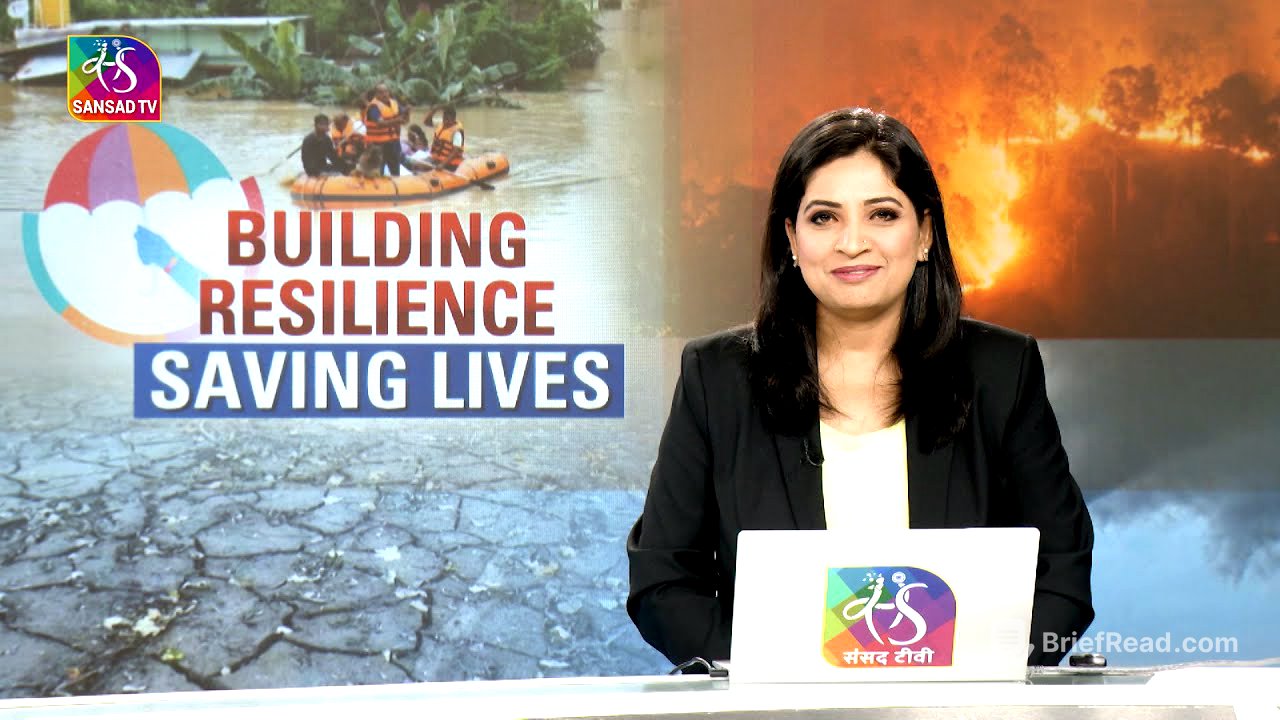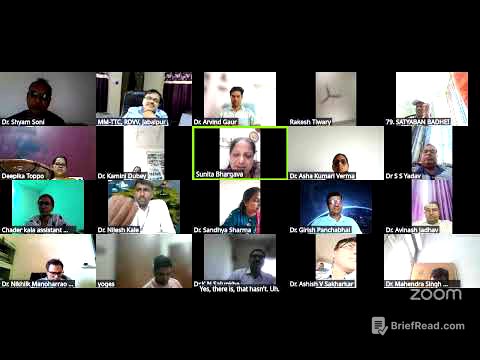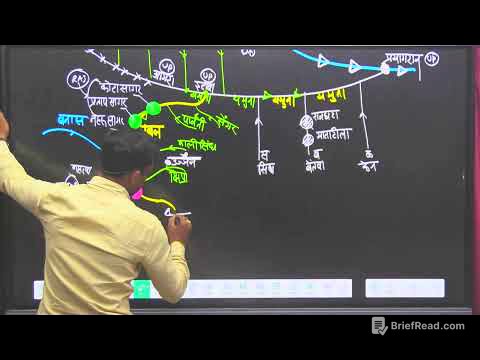TLDR;
The discussion revolves around disaster risk reduction, highlighting the increasing frequency and cost of disasters globally. It emphasizes the importance of funding resilience over disaster response, with a focus on India's evolving disaster management framework. Key points include:
- The need for proactive measures and preparedness.
- Integrating climate risks into planning processes.
- Strengthening community engagement and local-level capacity.
Introduction: Disaster Risk Reduction and India's Approach [0:13]
The host, Tina Jha, introduces the topic of disaster risk reduction, noting the rising frequency and costs of disasters worldwide. She mentions that in 2024, almost 46 million people were displaced from their homes due to disasters. The theme for this year's International Day for Disaster Risk Reduction is "fund resilience not disasters," urging governments and institutions to prioritize resilience in climate and development action. India has adopted a holistic approach to disaster risk reduction, focusing on preparedness, response, and leveraging technology and international cooperation. The discussion will explore India's disaster management framework, progress, challenges, and vision for a resilient future.
CDRI's Mission and the Importance of Funding Resilience [2:38]
David White, director at CDRI, explains how the theme of funding resilience aligns with CDRI's mission. CDRI, initiated by India, is a coalition of 50 countries and 10 international organizations focused on disaster-resilient infrastructure. This infrastructure is designed to withstand and recover from extreme weather events. CDRI focuses on critical sectors like power, telecom, and transport, and at-risk geographies like small island developing states and mountainous regions. Investing in disaster resilience protects lives, economies, and promotes growth. CDRI supports 183 projects globally, including developing building codes and implementing early warning systems.
Financial Mechanisms for Prevention and Preparedness [5:12]
David White discusses CDRI's advocacy for financial mechanisms that prioritize prevention and preparedness. CDRI is working with India, Nepal, Mauritius, and Fiji to develop disaster risk financing frameworks. These frameworks assess potential losses from hazards and identify funding gaps, enabling governments to make risk-informed decisions and allocate resources for better preparedness.
India's Evolution in Disaster Management [5:53]
Professor Santosh Kumar assesses India's progress in disaster management, highlighting the shift from relief and response to a proactive, risk-reduction approach. He mentions Prime Minister's 10-point agenda and the streamlining of agencies. The 15th Finance Commission brought a sea change by supplementing the budget for disaster risk reduction. The 2001 Gujarat earthquake was a turning point, leading to the first disaster management act with a focus on long-term recovery and resilient reconstruction. The subject was transferred to the Ministry of Home Affairs, leading to national legislation emphasizing prevention and mitigation. Institutional systems like the National Disaster Management Authority were created at various levels.
Integrating Climate Risks into Disaster Management [11:28]
Suruchi Badwal discusses the close connection between disasters and the changing climate. She notes that extreme weather events are occurring more frequently and with greater intensity. Integrating climate risks into planning is essential for better preparedness and mitigation strategies. She feels that disaster management and climate change resilience are often treated as separate domains, which needs to change for effective planning and action.
Effectiveness of Risk-Informed Approaches in India [15:31]
Professor Kumar addresses the implementation of risk-informed approaches in India, noting the challenges in a large and diverse country. Cities are growing rapidly, putting pressure on infrastructure. He questions whether new developments and investments are risk-informed. The housing sector is significantly impacted by disasters. He emphasizes the importance of informing stakeholders about risks and involving them in mitigation measures, including banks, insurance companies, and individual households.
CDRI's Role in Driving Resilience at a Global Scale [19:18]
David White explains how CDRI's coalition model drives resilience globally. Climate change and resilience are shared challenges that no country can meet alone. CDRI provides expertise, financial support, and shares good practices. For example, CDRI has worked with five Indian states to enhance the resilience of their telecom sector. It also supports cities in various countries to respond to extreme heat and urban water resilience challenges. India's experiences are helping CDRI shape its approaches and policies.
Financing Mechanisms and Mainstreaming Resilience [22:22]
David White discusses how multilateral development banks, private investors, and governments can collaborate to mainstream resilience in infrastructure financing. He suggests that MDBs and governments can support in de-risking investments through credit guarantees and blended finance mechanisms. At the project level, robust preparation with sound disaster risk reduction components is essential. CDRI has developed a cost-benefit analysis tool that shows a return of 7 to 12 rupees for every one rupee invested in resilience.
Community Engagement and Local Level Capacity Building [23:57]
Professor Kumar emphasizes the importance of community engagement as the first responder. He advocates for a reverse pyramid approach, strengthening local-level institutions and community workers. The amended Disaster Management Act focuses on creating authorities for urban local bodies. He suggests that mitigation funds should be used to strengthen community institutions. He also highlights the need to translate disaster risk information into simple terms for the community to understand and act upon.
Looking Ahead: Challenges and the Next Decade [28:21]
Suruchi Badwal summarizes that while there has been investment in community preparedness, resilient infrastructure, and technological interventions, challenges persist in implementation. She emphasizes the need for every individual to be aware of the risks they are exposed to and the measures they should take. She feels that community-based disaster risk management programs need to be more effective in making communities the first responders. The need is to simplify scientific jargon and translate information into simple forms for the community to understand.
Building a Sustainable Future [31:54]
The host concludes by emphasizing that building a sustainable future requires every stakeholder to do their bit. She thanks the guests for sharing their thoughts and views.









